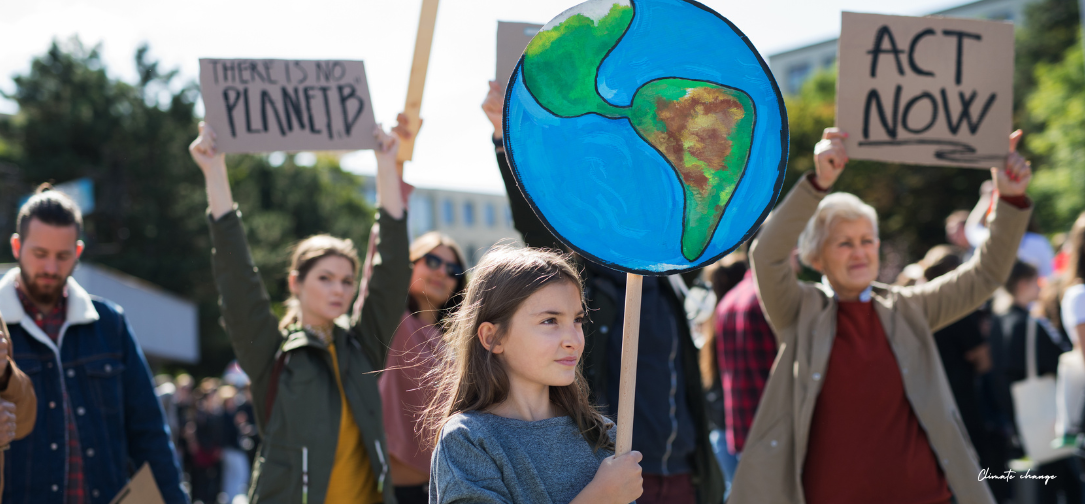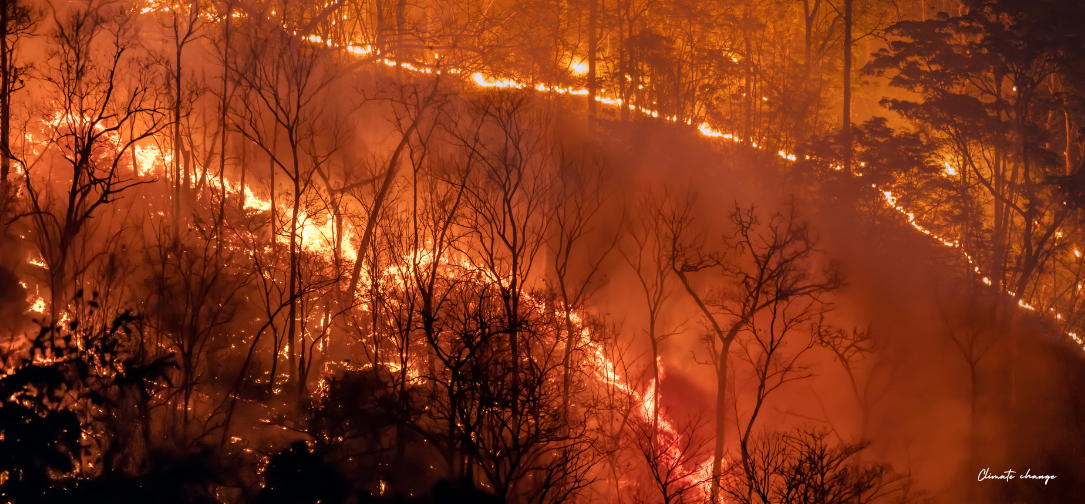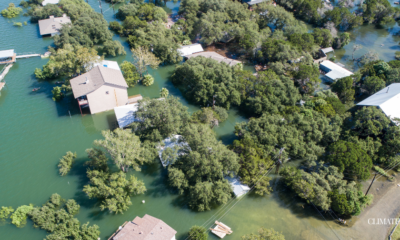The State of the Climate: Alarming New Evidence
1. Global Temperature Rise: Breaking Records
One of the most concerning trends in recent years is the continuing rise in global temperatures. According to the World Meteorological Organization (WMO), 2023 was one of the hottest years on record, with global temperatures averaging about 1.2°C above pre-industrial levels. This rise is dangerously close to the 1.5°C threshold set by the Paris Agreement, beyond which the effects of climate change are expected to become increasingly catastrophic.
The Intergovernmental Panel on Climate Change (IPCC) has released its Sixth Assessment Report, which emphasizes that the frequency and intensity of extreme weather events—such as heatwaves, droughts, and heavy rainfall—are directly linked to this temperature increase. The report warns that if current emission trends continue, the world could surpass the 1.5°C limit by the early 2030s, leading to irreversible changes in many ecosystems.
2. Melting Ice and Rising Sea Levels
The polar ice caps and glaciers are melting at unprecedented rates, contributing significantly to global sea level rise. The National Oceanic and Atmospheric Administration (NOAA) reports that global sea levels have risen by about 8-9 inches since 1880, with about a third of that increase occurring in the last two and a half decades. The latest data indicates that sea levels are now rising at an average rate of 3.3 millimeters per year, and this rate is accelerating.
A study published in Nature highlights the alarming rate of ice loss in Greenland and Antarctica, which together account for a significant portion of global sea level rise. Greenland alone lost an estimated 532 billion metric tons of ice in 2023, enough to raise global sea levels by 1.5 millimeters. This melting contributes not only to rising sea levels but also to changes in ocean currents, which can have further impacts on global climate patterns.
3. Ocean Warming and Acidification
The world’s oceans are absorbing much of the excess heat generated by greenhouse gas emissions, leading to significant changes in marine ecosystems. According to the IPCC, over 90% of the excess heat trapped by greenhouse gases has been absorbed by the oceans. This has led to ocean warming, which is contributing to the bleaching of coral reefs, the migration of marine species to cooler waters, and the disruption of fishing industries.
In addition to warming, oceans are becoming more acidic as they absorb carbon dioxide from the atmosphere. Ocean acidification poses a severe threat to marine life, particularly organisms with calcium carbonate shells or skeletons, such as corals, mollusks, and some plankton species. A report by the National Marine Fisheries Service indicates that continued acidification could have devastating effects on marine biodiversity and the communities that depend on it.
4. Biodiversity Loss: A Crisis Within a Crisis
Climate change is accelerating the loss of biodiversity, which is itself a significant environmental crisis. The International Union for Conservation of Nature (IUCN) reports that climate change is now one of the leading drivers of biodiversity loss, affecting ecosystems from the Arctic to the tropics. Species that cannot adapt quickly enough to changing temperatures, altered precipitation patterns, and shifting ecosystems are facing heightened risks of extinction.
The IUCN’s Red List of Threatened Species has expanded as more species are assessed as endangered or critically endangered due to climate-related factors. For example, the warming of the Arctic is threatening species such as the polar bear and the Arctic fox, while rising ocean temperatures and acidification are decimating coral reefs, which are among the most diverse ecosystems on the planet.
Social and Economic Impacts: The Human Cost of Climate Change
1. Health Impacts: From Heatwaves to Vector-Borne Diseases
The health impacts of climate change are becoming increasingly apparent, with extreme weather events, heatwaves, and the spread of vector-borne diseases leading to higher mortality rates and increased healthcare costs. A report by The Lancet Countdown on Health and Climate Change highlights that the number of vulnerable people exposed to heatwaves has increased by 125 million between 2000 and 2022.
Heatwaves, which are becoming more frequent and severe due to climate change, are particularly deadly for the elderly, young children, and those with pre-existing health conditions. In 2023, Europe experienced one of its most intense heatwaves on record, with temperatures in parts of Spain and Italy exceeding 45°C (113°F). This heatwave was responsible for thousands of excess deaths, particularly among the elderly population.
Moreover, changing climate patterns are altering the distribution of vector-borne diseases such as malaria, dengue fever, and Lyme disease. Warmer temperatures and altered precipitation patterns are expanding the habitats of mosquitoes and ticks, leading to the spread of these diseases into new regions. The World Health Organization (WHO) has warned that without effective mitigation strategies, the global burden of these diseases could increase significantly.
2. Economic Costs: The Rising Price of Inaction
The economic impacts of climate change are vast and far-reaching, affecting everything from agriculture to infrastructure and insurance. A report by the Global Commission on Adaptation estimates that the economic costs of climate change could reach $7.9 trillion by 2050 if global temperatures continue to rise unchecked.
Agriculture is particularly vulnerable, with changing weather patterns leading to reduced crop yields and increased food prices. The U.S. Department of Agriculture (USDA) reports that extreme weather events, such as droughts and floods, have already caused billions of dollars in losses for American farmers. In 2023, the Midwest experienced one of the worst droughts in recent history, leading to significant reductions in corn and soybean yields.
Infrastructure is also at risk, particularly in coastal cities where rising sea levels and increased storm intensity threaten homes, businesses, and critical infrastructure. A study by the Center for Climate Integrity estimates that by 2040, the U.S. will need to spend over $400 billion on coastal defenses to protect against sea level rise.
The insurance industry is feeling the impact as well, with increasing claims from climate-related disasters leading to higher premiums and, in some cases, the withdrawal of coverage from high-risk areas. The Insurance Information Institute reports that insured losses from natural disasters in the U.S. reached $91 billion in 2023, a figure that is expected to rise as climate change accelerates.
3. Displacement and Migration: Climate Refugees on the Rise
As the impacts of climate change become more severe, displacement and migration are emerging as critical issues. The Internal Displacement Monitoring Centre (IDMC) reports that in 2023, climate-related disasters displaced over 24 million people worldwide. This figure is expected to increase as extreme weather events become more frequent and intense.
The concept of “climate refugees” is becoming a reality, with people being forced to leave their homes due to rising sea levels, extreme weather, and resource scarcity. The Pacific Island nations, such as Kiribati and Tuvalu, are among the most vulnerable, with entire communities facing the prospect of relocation as their islands become uninhabitable.
In addition to displacement within countries, climate change is also driving international migration. The World Bank’s Groundswell report estimates that by 2050, there could be over 216 million internal climate migrants across six regions, including Sub-Saharan Africa, South Asia, and Latin America. This migration could lead to increased competition for resources and exacerbate social tensions, particularly in regions already struggling with economic and political instability.

Mitigation Strategies: Pathways to a Sustainable Future
1. Renewable Energy: The Backbone of Decarbonization
Transitioning to renewable energy sources is widely recognized as one of the most effective strategies for mitigating climate change. Renewable energy, including solar, wind, hydro, and geothermal, produces little to no greenhouse gas emissions, making it a key component of efforts to decarbonize the global energy system.
According to the International Renewable Energy Agency (IRENA), the global capacity of renewable energy reached 2,800 gigawatts (GW) in 2023, accounting for nearly 30% of the world’s total electricity generation. Solar and wind power are leading the charge, with solar power capacity increasing by 22% and wind power by 12% over the past year.
The cost of renewable energy continues to decline, making it increasingly competitive with fossil fuels. A report by the International Energy Agency (IEA) found that in many regions, the cost of producing electricity from solar and wind is now lower than from coal or natural gas. This cost competitiveness, combined with the growing demand for clean energy, is driving investment in renewable energy projects worldwide.
2. Carbon Capture and Storage (CCS): Reducing Atmospheric CO2
While renewable energy is critical for reducing future emissions, addressing the carbon dioxide (CO2) already in the atmosphere is equally important. Carbon Capture and Storage (CCS) technologies are designed to capture CO2 emissions from industrial processes and power plants and store them underground or use them in other applications.
The Global CCS Institute reports that as of 2023, there are 40 large-scale CCS facilities in operation worldwide, with a combined capacity to capture and store about 40 million metric tons of CO2 annually. While this represents significant progress, it is still far below the scale needed to meet global climate targets.
Recent advancements in CCS technology are helping to improve its efficiency and reduce costs. For example, a study published in the journal Science highlighted a new technique for capturing CO2 directly from the air, known as direct air capture (DAC). While still in the early stages of development, DAC has the potential to play a significant role in achieving net-zero emissions by mid-century.
3. Reforestation and Ecosystem Restoration: Nature-Based Solutions
Nature-based solutions, such as reforestation and ecosystem restoration, are gaining recognition as cost-effective and sustainable ways to mitigate climate change. Forests, wetlands, and other ecosystems act as carbon sinks, absorbing CO2 from the atmosphere and storing it in biomass and soil.
A report by the United Nations Environment Programme (UNEP) emphasizes the importance of restoring degraded ecosystems to enhance their capacity to sequester carbon. The report estimates that global reforestation efforts could sequester up to 10 gigatons of CO2 annually by 2050, equivalent to one-third of the emissions reductions needed to keep global warming below 2°C.
In addition to sequestering carbon, reforestation and ecosystem restoration provide numerous co-benefits, including improved biodiversity, water regulation, and climate resilience. Countries around the world are committing to ambitious reforestation targets as part of their climate action plans. For example, China’s “Great Green Wall” project aims to restore over 35 million hectares of forest by 2050, while Brazil has committed to restoring 12 million hectares of deforested land by 2030.
4. International Cooperation: The Role of Global Agreements
Effective mitigation of climate change requires international cooperation, as greenhouse gas emissions do not respect national borders. The Paris Agreement, adopted in 2015, remains the cornerstone of global climate efforts, with 195 countries committing to limit global warming to well below 2°C, with efforts to keep it below 1.5°C.
In 2023, the United Nations Climate Change Conference (COP28) in Dubai saw countries reaffirm their commitments under the Paris Agreement and agree on a framework for enhanced climate action. One of the key outcomes of COP28 was the adoption of a global stocktake process, which will assess collective progress towards the goals of the Paris Agreement every five years.
Another significant development in international cooperation is the Global Methane Pledge, launched at COP26 in 2021 and expanded in subsequent years. Over 150 countries have committed to reducing methane emissions by 30% by 2030. Methane is a potent greenhouse gas, and reducing its emissions is seen as a critical step in achieving near-term climate goals.
5. Climate Adaptation: Building Resilience to Impacts
While mitigation efforts are essential, the impacts of climate change are already being felt, making adaptation equally important. Climate adaptation involves making adjustments to social, economic, and environmental systems to reduce vulnerability to the impacts of climate change.
A report by the Global Adaptation Initiative (GAIN) highlights the need for increased investment in adaptation measures, particularly in developing countries that are most vulnerable to climate impacts. The report estimates that global adaptation costs could reach $300 billion annually by 2030, but the benefits of investing in adaptation far outweigh the costs.
Examples of successful adaptation strategies include the construction of seawalls and flood barriers to protect coastal cities, the development of drought-resistant crops, and the implementation of early warning systems for extreme weather events. In Bangladesh, for instance, a combination of improved flood forecasting, community-based disaster preparedness, and the construction of cyclone shelters has significantly reduced the death toll from cyclones and flooding.
Conclusion
The latest reports and findings on climate change underscore the urgent need for comprehensive and coordinated action to address this global crisis. The impacts of climate change are becoming increasingly severe, affecting ecosystems, human health, and economies worldwide. However, there are pathways to a sustainable future, including the transition to renewable energy, the implementation of carbon capture and storage technologies, and the restoration of natural ecosystems.
International cooperation remains critical, as global agreements like the Paris Agreement provide the framework for collective action. At the same time, adaptation strategies are essential to build resilience to the inevitable impacts of climate change.
As the evidence of climate change’s impacts continues to mount, it is clear that the window for effective action is narrowing. The decisions made today will determine the trajectory of the global climate for generations to come. By embracing the latest findings and implementing bold mitigation strategies, humanity has the opportunity to mitigate the worst effects of climate change and build a more sustainable and resilient world.

 Press Release4 days ago
Press Release4 days ago
 Press Release5 days ago
Press Release5 days ago
 Business6 days ago
Business6 days ago
 Press Release5 days ago
Press Release5 days ago
 Press Release5 days ago
Press Release5 days ago
 Press Release5 days ago
Press Release5 days ago
 Press Release5 days ago
Press Release5 days ago
 Press Release4 days ago
Press Release4 days ago

















